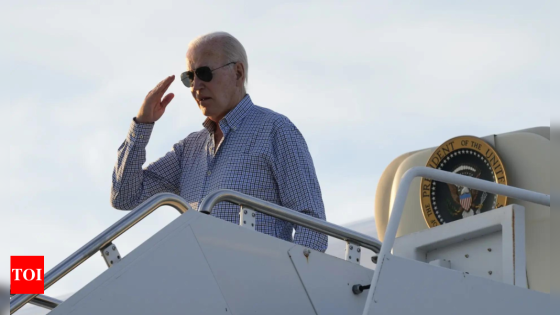Aviator-style sunglasses draw in pilots and style hounds alike—so much so that new variations on the classic Ray-Bans from the 1930s pop up constantly. While the original aviator’s teardrop-shaped, oversized lens was created to allow pilots to look down at the instrument panel without losing protection from glare, it hasn’t changed (much) in the modern age, even with glass displays that outshine the sun.
Still, it’s important that your eye protection works for you on the flight deck—or wherever you might wear your frames.
More from Robb Report
Pilot vision expert Dr. Ingrid Zimmer-Galler, an ophthalmologist/retina specialist, FAA consultant, and a retired associate professor formerly at Wilmer Eye Institute/Johns Hopkins Medical Institutions, emphasizes that the use of sunglasses isn’t just for looking cool—it lessens fatigue and, over the long run, can help reduce the effects of ongoing UV and other light damage to the eyes, suffered particularly by pilots flying at altitude.
“From a medical standpoint, the biggest question I get is: ‘What about UV light?’ The main scientific evidence indicates that UV light exposure over your lifetime induces earlier onset of particular kinds of cataracts,” Zimmer-Galler says. “The good news is that prevention is simple by wearing sunglasses that block UV light.”
Pilots also need to steer clear of polarized lenses, as they render glass displays impossible to read. And a prescription often precludes the use of over-the-counter models.
With that in mind, here’s a selection of sunglasses that not only evoke the aviator lifestyle but serve anyone living life at altitude.
Best of Robb Report
Sign up for Robb Report’s Newsletter. For the latest news, follow us on Facebook, Twitter, and Instagram.
Click here to read the full article.
Flying Eyes Kestrel
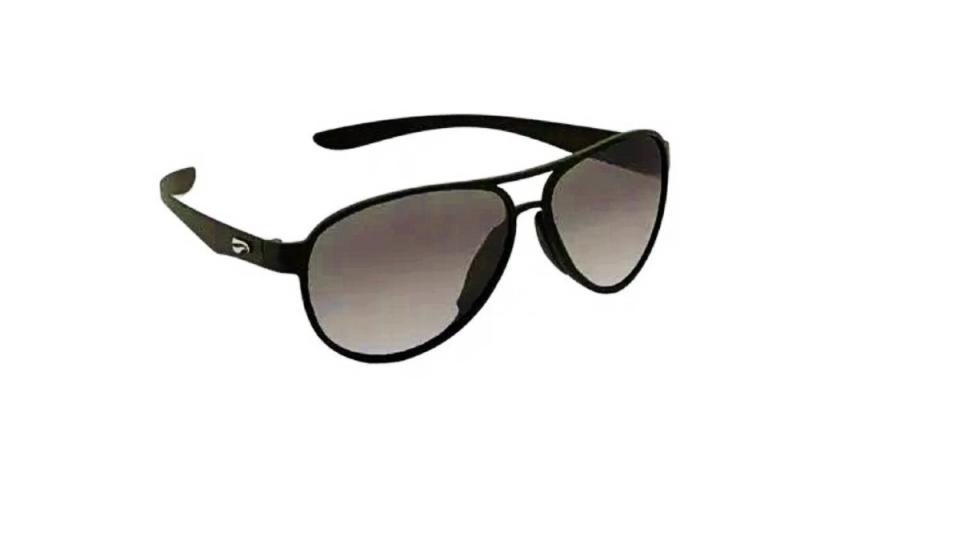
Flying Eyes founder Dean Siracusa made his career as a commercial film director—so he knows the importance of color accuracy. A private pilot, Siracusa started Flying Eyes in 2009 in response to the nagging soreness he’d suffer from thick sunglass temples abrading under his headset when he flew. “Every business I’ve started has been for a selfish reason,” says Siracusa. “Anyone who has to wear a helmet or headset gets it.”
Now with a dozen opthamic shapes and frames ranging from tortoise to clear, Flying Eyes has a fit for everyone. Its classic aviator style, the Kestrel, comes with a one-year warranty and lens replacement for free in that timeframe.
And the brand is not afraid to put its sunglasses to the test: Flying Eyes long sponsored pilots in the Sport Class at the Reno Air Races, and it’ll continue to promote racers in the future.
Kestrels come in a 59 mm lens size, with matte-black one mm Resilamide frames.
Method Seven Ascent Aviator Series
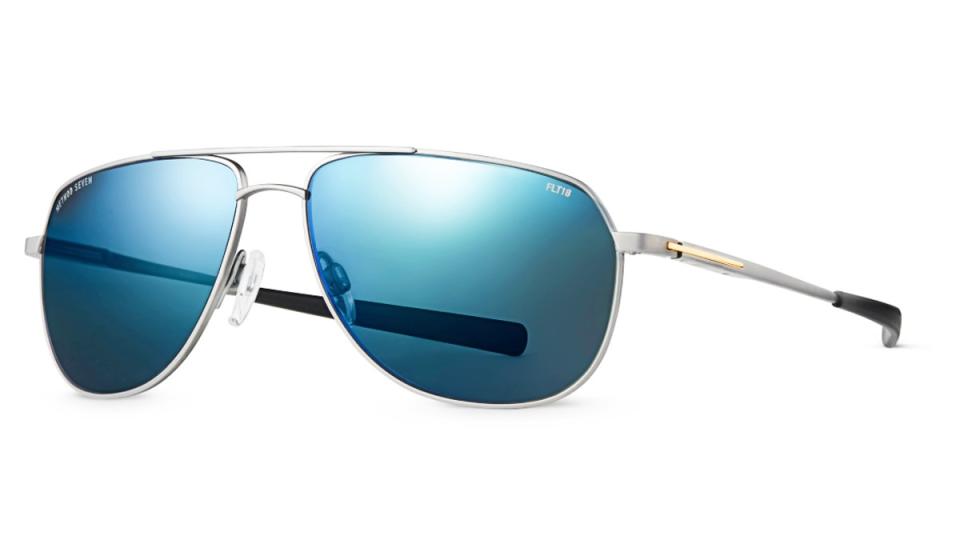

Not only do the Method Seven lines block nearly all UV light, they also filter infrared (IR) and high-energy visible (HEV) light. The company uses notch filters—which screen out the in-between colors such as orange, yellow, and cyan—to heighten the effect of red, green, and blue colors that humans register in the visible light spectrum. Notch filtering bumps up the contrast—allowing pilots to gather detail from cloud formations, for example. Just blocking light doesn’t work, as wearers of too-dark sunglasses know all to well: You lose depth perception especially.
But most of all, pilots report reduced eye fatigue after long flights in the Method Seven sunglasses. “It’s not just to look cool,” says Jamie Mitchell, brand manager for Method Seven’s aviation line. “Pilots get age-related eye problems at an earlier age than the general population,” mostly owing to UV damage at high altitudes.
In the past year, Method Seven has launched its clip-on series, a popular request from users with complex prescriptions—in addition to its range of lens choices in the original line: the Aviator FLT18, the Aviatrix SKY18, and the Patriot SKY18.
Flight Gear by Sporty’s
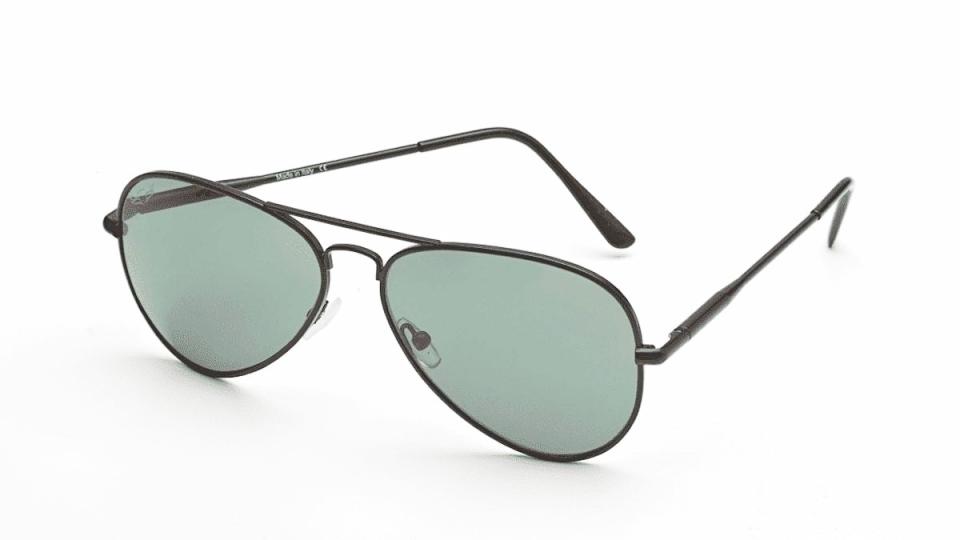

Many sunglasses on the market suit boaters or drivers—not pilots. In order to be “flight-deck friendly,” Sportsmans Market tracked down a specialty optics manufacturer near Milan, Italy, to partner with on its Flight Gear line, according to president John Zimmerman, rather than turning to a large conglomerate in Asia.
“We feel these compete with most of the big names in sunglasses, but at less than half the price,” Zimmerman says. The Flight Gear line delivers high-quality, non-polarized lenses with comfortable, flexible temples—rugged enough to withstand wearing under a headset—and at a price that’s a third of some of the name brands.
The 58 mm lenses target a medium face size, and the frames come in black or gold metal.
Ray-Ban Raptor


Iconic styles—starting with the Wayfarer—feature highly in the Ray-Ban story. But the original Aviator first hit the scene in 1937, with thin gold frames and a rounded, teardrop-shaped lens to provide protection for pilots in the Golden Age of Aviation.
Ray-Bans remain legendary among pilots for its quality lenses, immersive range of styles within the aviator segment, and attention to service. The brand were one of the first companies to produce aviator lenses for smaller (read: female) faces—nicknamed “baby Bans”—and the gunmetal-gray version in particular allowed a pilot to announce her aviation chops without getting lost behind the ubiquitous Maverick-gold frames.
The special-edition Raptors—available through Sporty’s Pilot Shop—make for a new take on the style, with a more rectangular frame and lens to suit face shapes not flattered by the teardrop aviator lens.
Cloudbase Optics Hi-Def Lee Wave


Here’s another wallet-friendly option specifically made for pilots, the Cloudbase Optics series featuring Carl Zeiss lenses, which provide high contrast, optical clarity, and high UV protection. Particularly noted for limiting the brightness coming into the cockpit, these would translate well to other high-light arenas, such as skiing and sailing.
The Cloudbase Hi-Def Lee Wave models are constructed of CR39—a polycarbonate ethylene plastic—for durability and clarity close to that of glass while remaining lightweight. The TR90 resin frames reduce weight further, while sliding easily beneath a headset. In fact, the Cloudbase models will float in salt water—handy for boaters and watersports enthusiasts as well.
The Cloudbase Lee Wave comes with 60 mm lenses, a 13 mm bridge, and 135 mm temples.
Randolph 23K Gold Military Special Edition


Founded by master machinists Jan Waszkiewicz and Stanley Zaleski— Waszkiewicz came to the U.S. after World War II, and Zaleski during the Cold War—Randolph Engineering formed in 1973 utilizing proprietary optical tools the pair had crafted in their basement. By the mid-80s, Randolph had contracted with the U.S. armed forces to deliver military-spec aviator sunglasses.
Now, after more than 50 years, the line features the Aviator Military special edition with 23-karat-gold frames—including a version with non-polarized lenses suitable for pilots.
The 23-karat edition can be ordered with a non-polarized American Gray lens, in 52 mm, 55 mm, and 58 mm lens sizes with personalized engraving available.
Buy Now on Randolph: From $299
EnChroma Rockridge Outdoor Protan
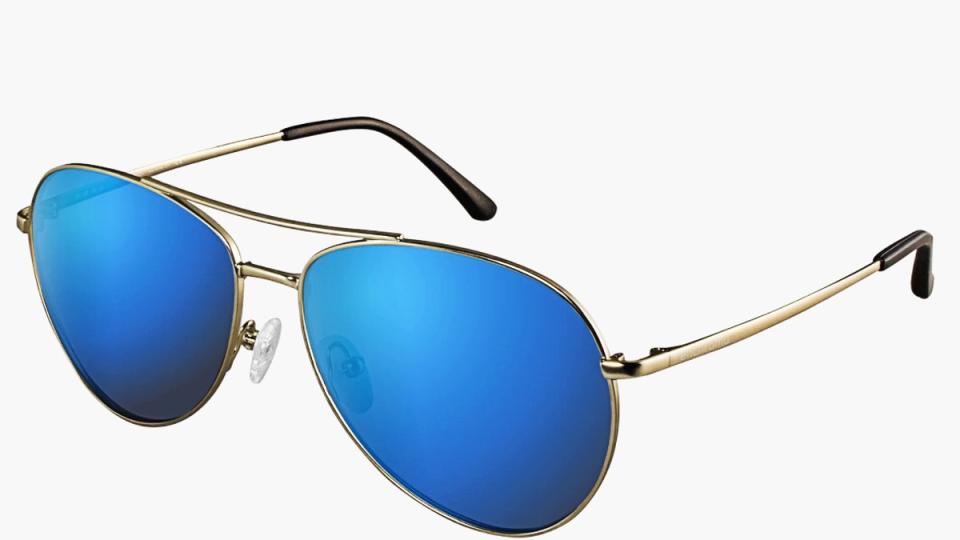

Looking for a boost to your color vision? EnChroma patented its lens technology to help those with degrees of red-green colorblindness.
Pilots with the deficiency are typically limited to flying during the daylight hours—but these glasses help stimulate your brain’s red-green color processing to increase the ability to see the world in vibrant color, by altering the signal to the M (green) and L (red) photoreceptor cones to boost contrast along a “confusion line” where those colors tend to overlap.
Take EnChroma’s test online: Whether you skew more toward red colorblindness (Deutan) or green (Protan), the brand has an aviator style to try—and up to 80 percent of those with colorblindness gain positive effect from using the glasses.
The Enchromas can be ordered with a non-polarized lens and gunmetal or gold frame with free shipping in the U.S.
Source Agencies

